| The Sandisfield Times |
|---|
| The Montville School |
|
by Ron Bernard Published October 1, 2024. |
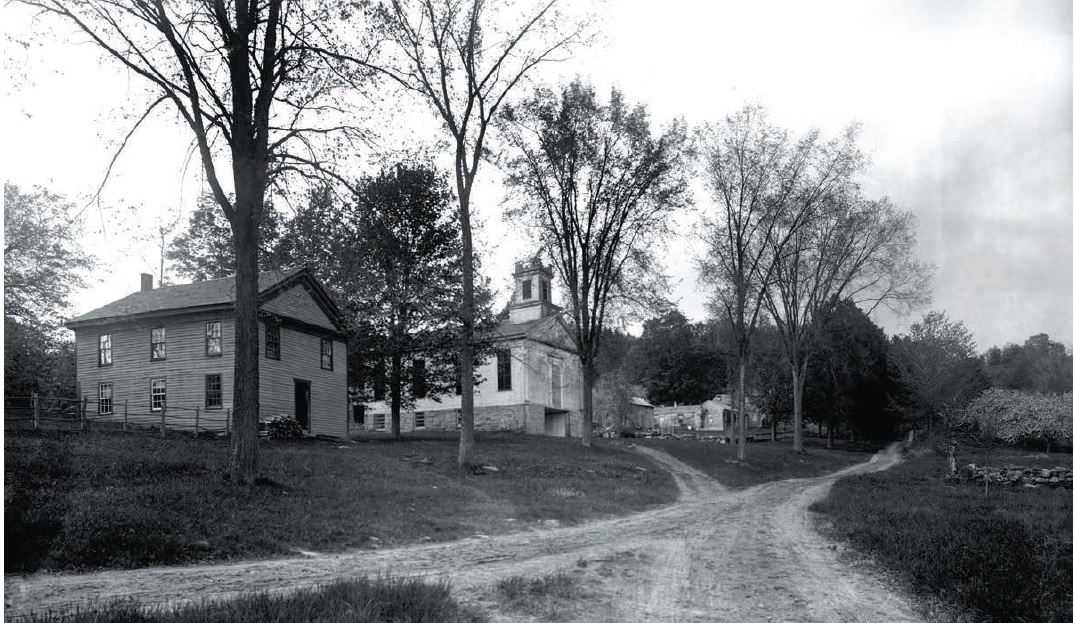 The Montville School beside the (then) Montville Baptist Church at the beginning portion of Hammertown Road. (DeMars photo, c.1906. Great Barrington Historical Society collection.) |
|
For many years, Montville was its own village, stretching along both sides of the Sandisfield Road, upriver from the larger New Boston Village and downhill from Sandisfield Center. Two of its most prominent buildings were the two-story schoolhouse and the Baptist Church, now the Arts Center. School and church, a symbiotic relationship The Montville schoolhouse was probably built about the same time as the Baptist Church, c.1839-40, on land formerly owned by prosperous Montville resident, Newton Phelps. Both were built in handsome Greek Revival-style. The two stood side-by-side for 120 years, like a married couple growing old together. Both experienced ups and downs due to the same economic pressures and changes in size and nature of the population. Although one building was municipal and the other a private house of worship, both were community assets used by the same families. They complimented each other, and the lines were blurred. By the mid-1920s the school was flourishing with record enrollment, but because of Sandisfield’s economic decline and loss of population the school steadily lost students until it was closed in 1938. At the Baptist Church, membership began aging during the 1890s. When the last minister departed in 1918, the building was closed. In 1921, the remaining members of the congregation sold the church to the Sons of Abraham who turned the building into a synagogue. Seventy years later the remaining Jewish caretakers transferred ownership to a preservation-minded community group which rehabilitated the old building into the Sandisfield Arts Center, where it thrives today.
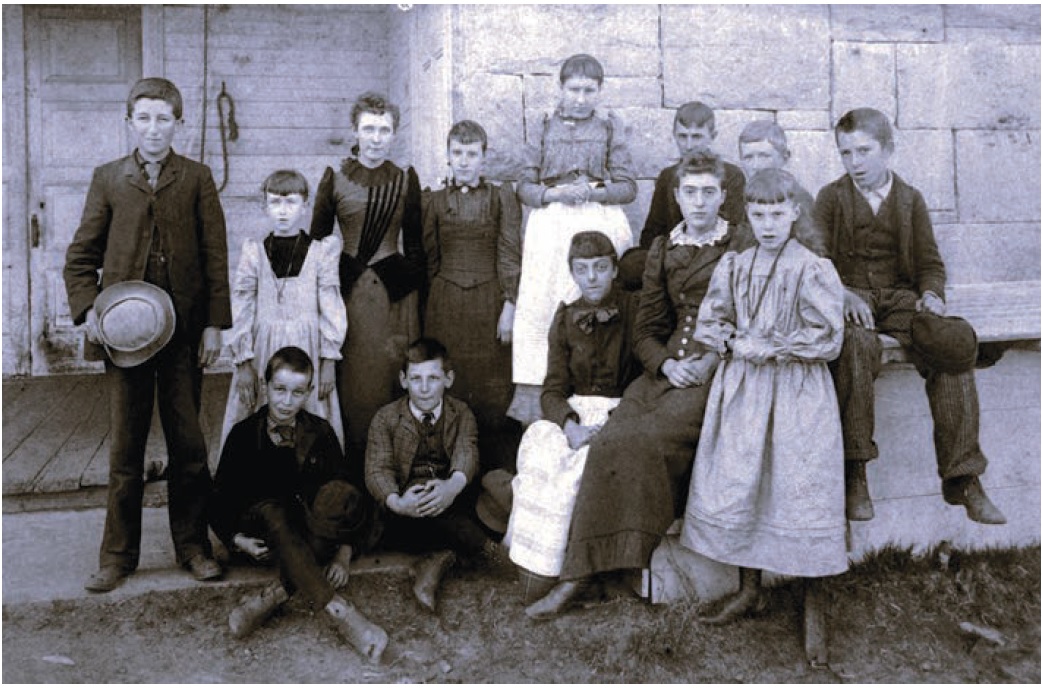 Teacher Hattie Merrill, standing 3rd from left with eleven students and an assistant. Class of 1895 photo taken in front of the Baptist church.
(Photo: From author’s collection.)
Teacher Hattie Merrill, standing 3rd from left with eleven students and an assistant. Class of 1895 photo taken in front of the Baptist church.
(Photo: From author’s collection.)
Sandisfield’s golden era and the rise of Montville In 1833, nine families petitioned the Town fathers to establish a new school district, which was approved. It was No. 13, the Mechanicsville District, a name which remained in common use for some time after the village was renamed Montville in about 1850. Before there was a dedicated building, children attended classes in private homes which was customary. The late-1830s was the beginning of a golden era for the Sandisfield. People were moving in, and prospects were good. Sandisfield’s population rose from 1,464 in 1840 to 1,649 in 1850, the historical peak. Families were large and school-age children comprised a significant proportion of Town population. Sandisfield in 1840 had 16 school districts, also an historic high. Also, by the 1840s the Town had built perhaps a dozen new one-room schoolhouses. Four of these buildings survive. Montville village, rapidly growing with its mills, mechanical and “wood-turning” shops, and small factories, was the economic engine for the town. Many new houses in Greek Revival-style appeared along the main road in the 1840s. The Montville school was the only two-story schoolhouse in Sandisfield, an indication that the Town anticipated continued growth. Social decline and school closures The hoped-for brighter future never materialized because of three major events: the Civil War of the 1860s, the proposed but failed railroad line of the 1870s, and the Great Depression of the 1930s. At least twenty-one young men from Sandisfield died as a consequence of the Civil War and some veterans resettled elsewhere. The collapse of the proposed Lee & New Haven Railroad in 1873 forced many families who had invested in the scheme to abandon their farms and move away. The Great Depression also displaced families. By 1940 Sandisfield’s population was only 421, close to the all-time low. School enrollment from 1880 to the 1920s fluctuated according to the number of families but the long-term trend was downward. There were four terms, Fall, Winter, Spring and Summer. Schools were closed or reopened every year or for portions of years. By 1904, there were only five active schools (districts) remaining. The Town annual report for 1907-08 indicates that the Montville school was dormant in 1907 but had eleven students for the Spring 1908 term. In 1909, seven schools operated, including Montville for the winter term. In farming communities, winter term attendance tended to be the highest because “large boys” were not needed to work as much on farms.
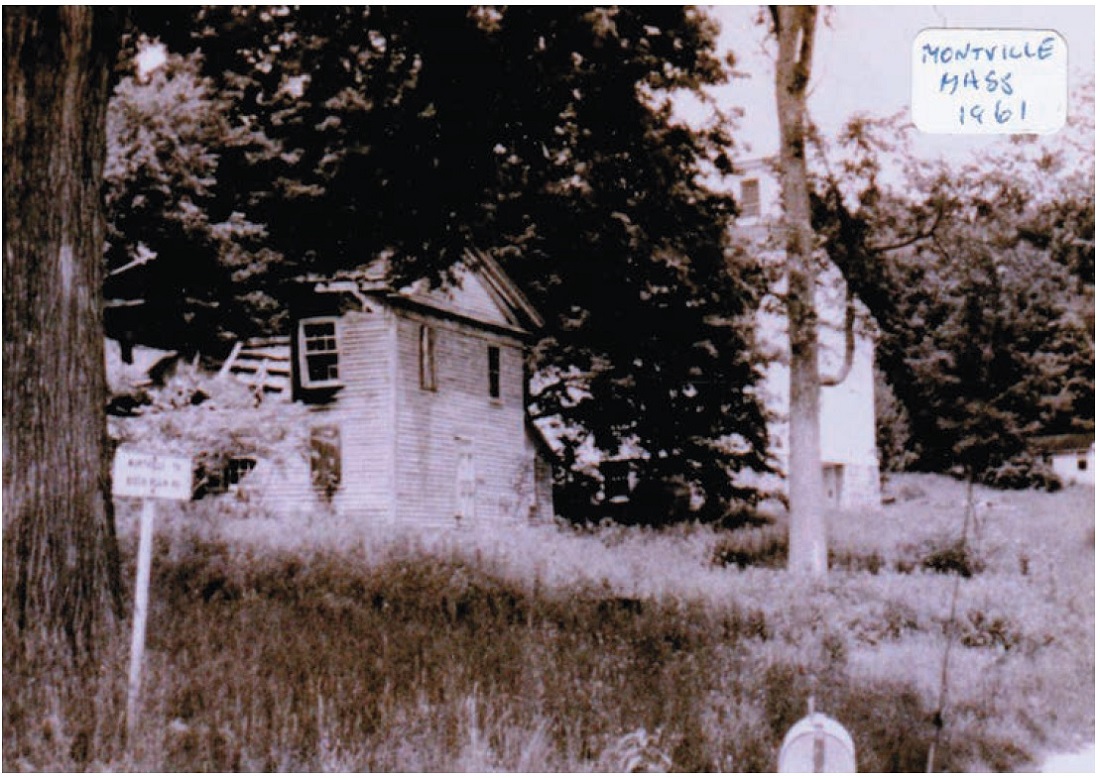 The building as it appeared in 1961 shortly before demolition. Jewish community revives the Montville school In 1906, an influx of Jewish families, refugees from the pogroms in eastern Europe who landed in New York, came to Sandisfield. They purchased dormant farms mostly in the northwest section of town. Not well suited for traditional agriculture, they soon turned to chicken farming and boarding houses in and around Montville. By the mid-1910s, their children and those of other Jewish families who came later were numerous in Montville. Sandisfield school enrollment in this period perked up which interrupted the long-term trend of closures. The Montville school in 1925-26 had thirty-four students, by far the largest class of any Sandisfield school district to that time. But robust enrollment at Montville was not sustained. By the 1929-30 school year there were only seventeen students. Sarah Cohen, daughter of Rabbi Max Cohen, taught all grades. In her book Soil and Shul, Sandisfield resident Lorraine German wrote: “Sarah, the eldest Cohen daughter, trained to be a teacher at the Westfield Normal School. She returned to Sandisfield after graduation and found a teaching job at the Montville school. Sarah made the trip between [her home in] West New Boston and Montville on foot every day.” By 1938, there were only seven children from five families remaining in Montville. The School Committee, in an annual reapportionment custom that dated to the 18th century, closed Montville and redirected the children to West New Boston, about three miles away. Ms. Cohen, who stood to lose her job of eight years, and three families objected and ‘went on strike.’ When the new school year started in September the parents of five children (three families) were steadfast and home-schooled their kids. Ms. Cohen conducted a petition and led a party to Boston to plead their case to officials, ultimately to no avail. All neighborhood schoolhouses were closed in 1950 when the consolidated “New School” opened (now the Sandisfield Town Hall). In March 1959, it was decided to put the Montville building and lot up for public auction. But by then the structure was so derelict it was demolished by the Sandisfield Fire Department in 1961. The original footprint of the schoolhouse has been outlined with a small wall mostly composed of stones found on the property. It is now a memorial garden for the Arts Center.
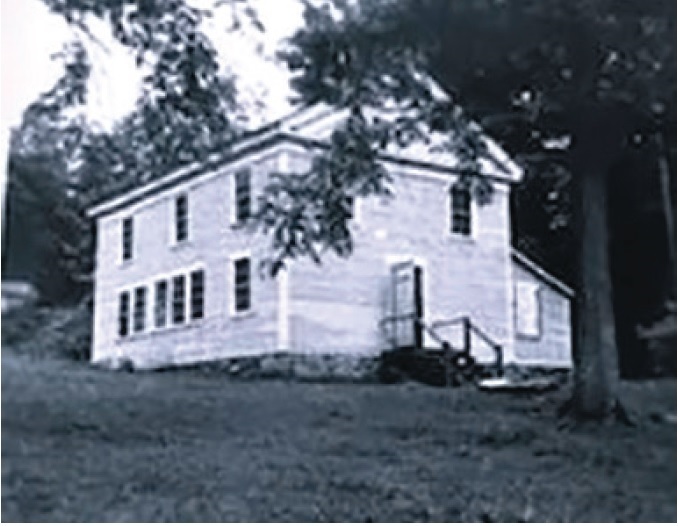 Never before published image of the Montville school as it appeared in the 1930s. (Photo courtesy Rochelle Wynne and Irene Conley, daughters of Sarah Cohen.) Editor’s note: The above was excerpted from a chapter in an upcoming history of Montville Baptist Church building, now home of the Sandisfield Arts Center. The book will be released next year in conjunction with the 30th anniversary the Arts Center. |
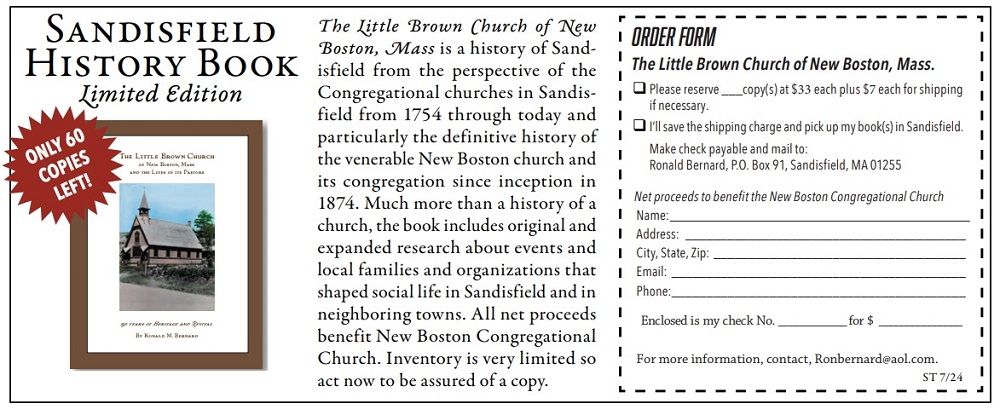
|
©The Sandisfield Times. All rights reserved.
Published October 1, 2024